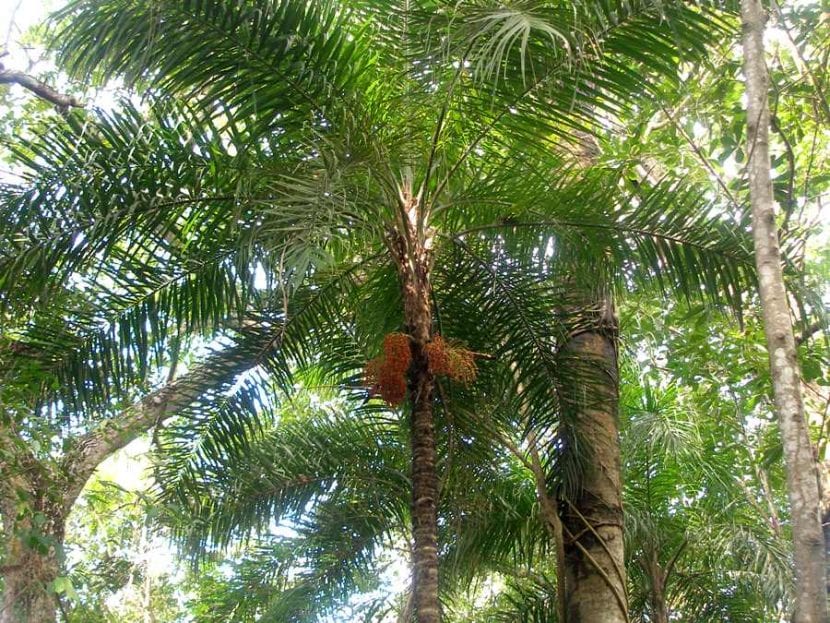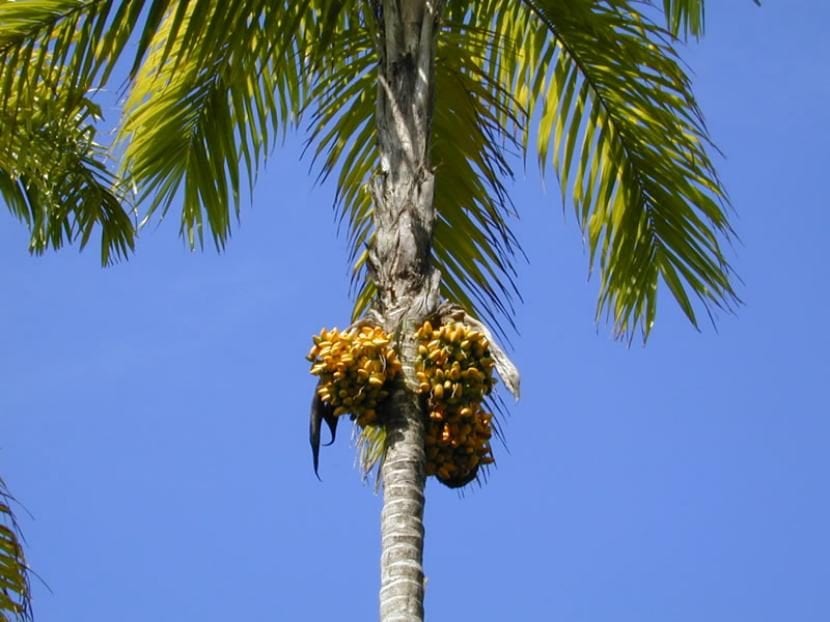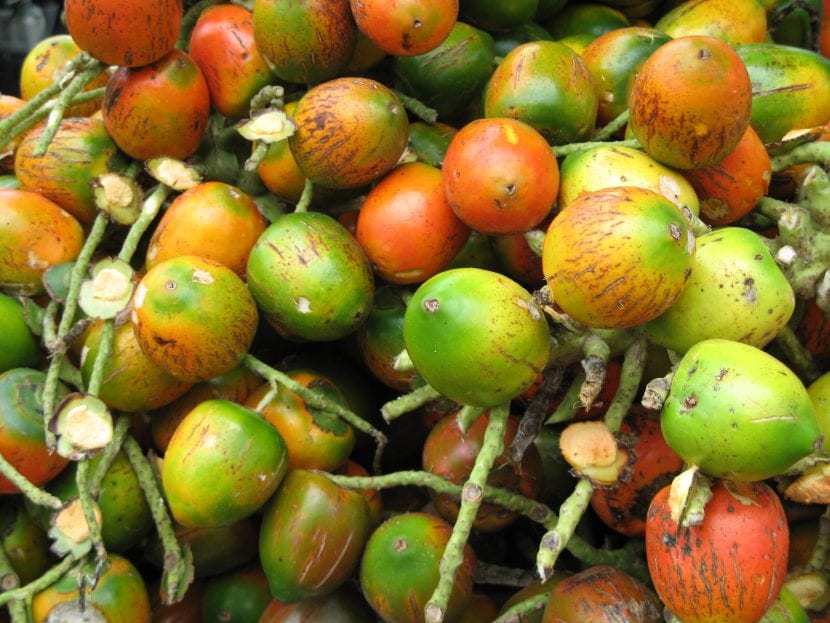
Image - PlantasdeColombia.com
La Bactris gasipaes It is a very interesting palm tree to have in those corners of the garden where there is not enough light, or even to have in a pot. Its slender trunk and its beautiful pinnate leaves will give that tropical touch that will make you think that you are making a dream come true.
In addition to being a very decorative species, it is also useful for humans. You want to know why?
What is Bactris gasipaes like?

Our protagonist is a palm native to the tropical and subtropical regions of America that receives many common names: chontaduro, chotadura, pupunha (pupuña), pijuayo, cachipay, pejibaye, treme or pifá. It grows to an impressive 20 meters tall, with a trunk about 30cm thick, ringed.
It is a plant with which you have to be a little careful, since its petioles are armed with thorns, except those of the 'Spineless' variety. Its leaves are pinnate and long, and can measure up to 2 meters. The fruits are oval in shape, orange-red when ripe, about 2cm long.
What care do you need?
Do you want to have a copy? Here is your care guide:
- Location: semi-shadow. Indoors it has to be in a very bright room.
- Soil or substrate: fertile, good drained.
- Irrigation: three times a week in summer, a little less the rest of the year.
- Subscriber: from spring to the end of summer it must be fertilized with a fertilizer for palm trees or with Organic fertilizers (As the guano for example) following the instructions specified on the package.
- Multiplication: by seeds in spring. Direct sowing in seedbed after removing the pulp. Germinates in 2 months at 25ºC.
- Planting or transplanting time: in spring.
- Rusticity: sensitive to cold. Temperatures below 0ºC harm it.
How useful is it for humans?

This is a very ornamental palm that looks great anywhere, but the reality is that in its places of origin the fruit, the wood, and the bud are used, from which the palm heart is extracted. But let's look at it in more detail:
- Fruit: can be consumed fresh or cooked with salted water for 30 to 60 minutes. It is also processed to obtain flour, with which more than 40 recipes are prepared. In addition, it contains phosphorus, calcium, iron, vitamins A, B and C.
- Palm hearts: it is used for the indisutrialización in preserves.
- Wood: used to make utensils.
Interesting, right?
Dear I am Nayadet and I live in ISLA DE PASCUA- CHILE, how can I get pifa seeds? Thank you, I hope you can help me.
Hello Nayadet.
I don't know how to tell you, I'm sorry. We are in Spain.
I recommend you look on ebay, maybe there you will find.
A greeting.
Hello, I would like to buy a pupuña palm tree in Spain, where can I find it? Thank you
Hello Simone.
First of all, let me tell you that the palm tree I am talking about in the article is a tropical palm tree, which does not resist frost.
And answering your question, they usually sell seeds on ebay, or also at rarepalmseeds.
A greeting.